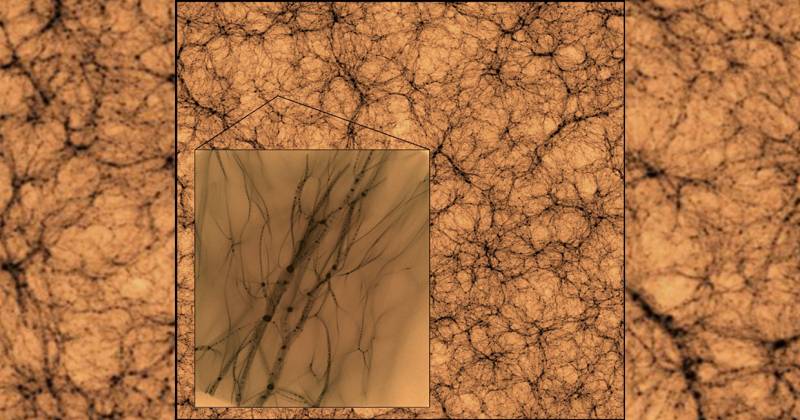
Dark matter comprises 85 percent of all matter in the Universe. It doesn’t interact with light. It can only be seen through the gravitational influence it has on light and other matter. To make matters worse, efforts to directly detect dark matter on Earth have been unsuccessful so far. The accuracy of any dark matter simulation depends upon the assumptions you make about dark matter. In this case, the team assumed dark matter consists of weakly interacting massive particles (WIMPs) with a mass of about 100 times that of a proton.

Recently a team from the Harvard & Smithsonian Center for Astrophysics ran a detailed simulation of the dark matter cosmos, and it has produced some surprising results. Dark matter formed in halos around galaxies, just as we observe, it found that halos also developed at all mass scales, from small, planet-mass halos, to galactic halos, to massive halos that form around clusters of galaxies. Dark matter is that when dark matter particles collide, they emit gamma radiation.
Since the scale of a halo would affect the energy spectrum of the gamma rays, this model makes specific predictions about the gamma-ray excess we should see both in the Milky Way and other galaxies. Dark matter remains one of the biggest unsolved problems in modern astronomy.

Post Your Comments